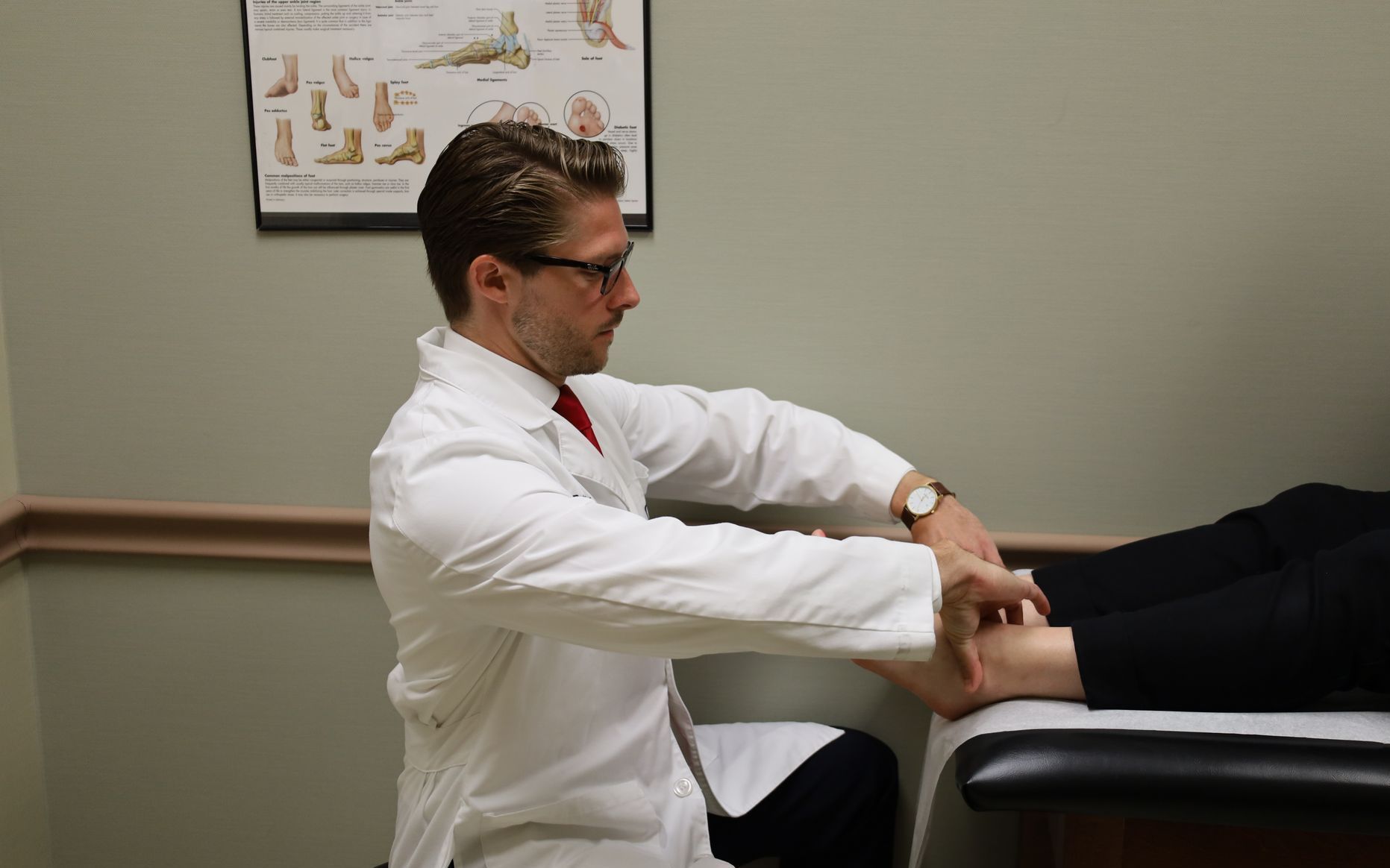Ankle Sprain Treatment in Baton Rouge
RELATED PAGES
What is an Ankle Sprain?
The ankle is a joint that must be capable of smooth, fluid movement, wide ranges of motion, and sudden directional changes. In a healthy ankle, these movements are achieved with the aid of strong ligaments that support the ankle, its motion and position. However, there are times when the ankle is rolled or twisted in an unnatural way, leading to stretching or even tearing of the supporting ligaments. This is known as an ankle sprain.
What are the Symptoms of an Ankle Sprain?
Ankle sprains can occur either while participating in athletic activities or even in daily activities such as climbing stairs. In fact, they are among the most common orthopedic injuries to affect patients of all ages and fitness levels. Depending on the nature and severity of the sprain, symptoms may include:
- Pain
- Swelling
- Bruising
- Popping sound or sensation when the injury occurs
- Instability of the ankle when weight-bearing
How are Ankle Sprains Diagnosed?
Diagnosing an ankle sprain begins with a physical examination where the doctor will palpate the area to check for signs of ligament injury and test range of motion. If a sprain is suspected, an imaging test may then be ordered to confirm the diagnosis and identify the severity of damage. Tests commonly used, include:
- X-ray – In an x-ray, radiation is used to produce an image of the ankle bones, helping rule out any potential fractures that may have occurred with the sprain.
- Magnetic Resonance Imaging (MRI) –
MRIs produce more detailed images of soft tissue such as ligaments through the use of a magnetic field and radio waves.
- Ultrasound – Sound waves are used to help the physician judge the condition of the injured ligament directly as the ankle is in different positions.
- CT Scan – In a CT scan, multiple x-ray images are taken from several different angles and used to create a 3D image with greater levels of detail.
Grades of an Ankle Sprain
The severity of ankle sprains is classified according to grades. There are three different grade
- Grade I – This is the least severe level of sprain. Stretching of one or more of the ligaments may cause tenderness and slight swelling, but the patient is still able to bear weight.
- Grade II – This grade of sprain includes partial tearing of the ligaments and is likely to produce significant amounts of pain and swelling. Patients may experience instability in the ankle and walk with a visible limp.
- Grade III – This is the most severe level of sprain with complete tearing of one or more ligaments. Grade III sprains will be accompanied by significant pain and swelling, and patients will be unable to bear any weight on the injured ankle.
Treatments for Ankle Sprains
While the method of treatment will depend on the grade of sprain, most are successfully treated using non-surgical techniques. Among the potential treatments used for ankle sprain patients are:
- R.I.C.E. – Rest, ice, compression and elevation (R.I.C.E.) is the first line of treatment for injuries such as ankle sprains for the first two to three days.
- Medication – Over the counter pain relievers like ibuprofen or acetaminophen can help control any pain associated with the injury.
- Mobility Devices – In higher grade sprains, devices such as crutches can be used to aid in mobility and help patients avoid weight-bearing. Braces or boots can also be useful to hold the foot and ankle in a fixed position and allow the ligaments to heal while preventing further injury.
- Physical Therapy – As part of the healing process for more severe sprains, physical therapy can help strengthen the damaged ligaments, aid in ankle stability, and restore lost range-of-motion.
- Surgery – Even in the most severe cases of sprain, immobilization and therapy are typically enough to fully rehabilitate the damaged ligaments. In rare cases where these therapies are ineffective, surgical intervention to reconstruct the torn ligament may be needed.
Ankle Sprain Specialists in Baton Rouge
RELATED READING
Foot and Ankle Blogs
MOVE MORE, HURT LESS.
QUICK LINKS
SIGN UP FOR OUR NEWSLETTER:
7301 Hennessy Blvd.
Suite 200
Baton Rouge, LA 70808
tel: (225) 766-0050
fax: (225) 766-1499
4463 LA 1 South
Suite A
Brusly, LA 70719
tel: (225) 766-0050
fax:
(225) 766-1499
19065 Dr. John Lambert Dr.
Suite 2100
Hammond, LA 70403
tel: (225) 766-0050
fax: (225) 766-1499
16158 Airline Hwy.
Prairieville, LA 70769
tel: (225) 766-0050
fax: (225) 766-1499
5000 O'Donovan Blvd.
Suite 306
Walker, LA 70785
tel: (225) 766-0050
fax: (225) 766-1499
Bone & Joint Clinic of Baton Rouge, Inc. complies with applicable Federal civil rights laws and does not discriminate on the basis of race, color, national origin, age, disability or sex.
Click to view our notice.
Bone & Joint Clinic of Baton Rouge | All Rights Reserved.






